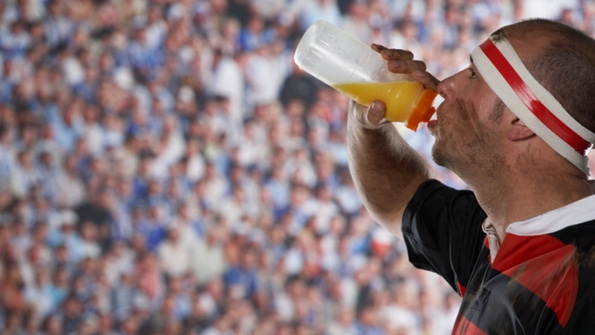Consumers expect a lot from their beverages. Are you savvy to their needs? BevNET.com's founder explains the top trends in U.S. beverage consumption.
February 1, 2012

 John Craven founded BevNET.com in 1996 with the mission to offer a comprehensive news forum for the beverage community. It touts the highest traffic and most content of any website dedicated to the non-alcohol beverage industry. Here, Craven spills the latest on trends in the beverage industry.
John Craven founded BevNET.com in 1996 with the mission to offer a comprehensive news forum for the beverage community. It touts the highest traffic and most content of any website dedicated to the non-alcohol beverage industry. Here, Craven spills the latest on trends in the beverage industry.
Functional Ingredients: What’s new in beverages this year?
John Craven: This year’s news is that we have continued, mounting success of an existing category. We have also seen the trend for coconut water as legitimate. We’ve gone from asking “Is it a fad?” to “How big can this get?” It’s been a back-to-basics year. Lots of new products appeared in the tea category; Arizona Tea had really good growth. Lemonade brands began hitting the market, and energy drinks we thought had hit a maturation point, but instead they had double-digit growth.
Fi: Why are consumers so sweet on coconut water?
JC: It’s all about hydration. The seeds for coconut water were planted decades ago with Gatorade; they had a very long run. Then there was a short but successful run for vitamin waters. Coconut water is now replacing that niche for the consumer, kind of like vitamin water 2.0. Coconut water is the ideal beverage. It’s hydrating, it’s slightly exotic in what it is and where it comes from, and it has such a clean image. It’s not super-processed, and unlike drinks like açai, it is not viscous.
Fi: If you can identify one principle that is guiding beverage consumers in America today, what would it be?
JC: Health and wellness is the overarching theme in all beverage categories. Even soda products are trying to carry a wellness message. People want to know what their drink “does for them” and that is where the sales are—not from simple refreshment drinks like Coke. Diet energy drinks are the biggest drivers, which we attribute to energy drink consumers getting older and not leaving the category. They’re just drinking different products. New consumers are also entering energy and drinking the full-calorie stuff.
Fi: How important is taste among beverage consumers? How much are they willing to sacrifice for the sake of being “healthy?”
JC: Not a lot. “What will this do for me?” is the driver behind a first purchase, and hydration and energy are the main benefits you feel immediately. Things like vitamins, cognitive benefits, etc., do they really work? But products need to offer more than health benefits if they want to attract repeat-purchasers, and that’s where taste comes in. It has to taste good. It’s your appetite that will drive what you buy on a repeat basis.
Fi: A few years ago, we reported on the enormous profit margins found in shots—energy shots in particular. Is that still true?
JC: Energy shots command insane profits, but they are pretty much a one-horse race. 5-Hour Energy is reporting $1 billion in retail sales last year. They have a premium price, a price comparable to Red Bull, but for a much smaller product, which costs much less to produce and ship. The margins are very high on a product like 5-Hour Energy, which has an efficiency of scale. Their competitors, though, can’t really compete.
Craven will be presenting "BevNET Online: Reviews and Beverage Trends" from 2:45-3:30 p.m. on Thursday, March 8, as part of Nutracon 2012 in Anaheim, Calif. For more information, or to register for Nutracon, please visit www.nutraconference.com.
About the Author(s)
You May Also Like




